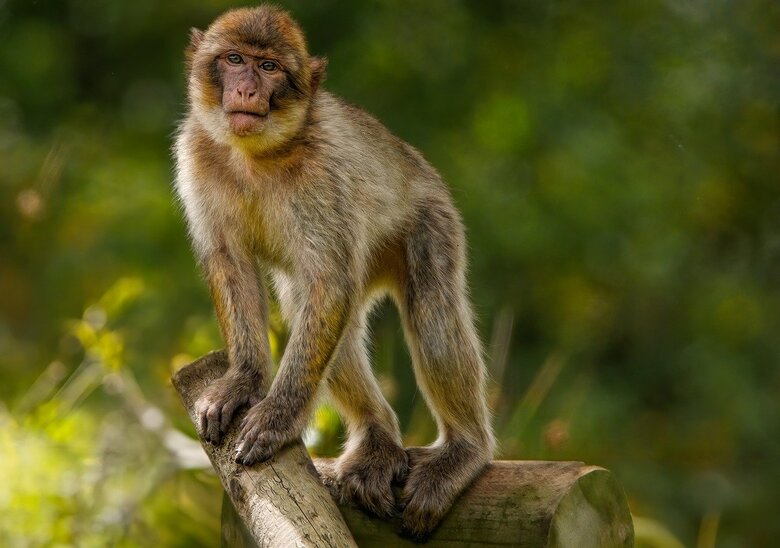Monkeys are one of the most significant members of the primate order, found in tropical and subtropical regions across the globe. As close relatives to humans, monkeys are known for their high intelligence, agile limbs, and complex social behaviors. Whether it’s their chatter in the jungles or their playful antics in urban parks, monkeys never fail to intrigue and fascinate people.

Monkeys play a critical role in the primate order, classified as follows:
Kingdom: Animalia
Phylum: Chordata
Class: Mammalia
Order: Primates
Suborder: Haplorhines
Infraorder: Simiiformes
Two Major Groups:
New World Monkeys (Platyrrhines): Found in Central and South America.
Old World Monkeys (Catarrhines): Found in Africa and Asia.
Diverse Sizes:
Monkeys vary widely in size, from the tiny pygmy marmoset weighing less than 1 kg to the robust baboon reaching up to 30 kg.
Facial Features:
Monkeys have expressive faces, with forward-facing eyes that provide excellent depth perception.
Flexible Limbs:
Most monkeys have strong, dexterous limbs and prehensile tails, aiding in climbing and movement.
Monkeys are social animals, often living in groups with complex hierarchical structures. They communicate through vocalizations, facial expressions, and physical interactions.
Monkeys primarily inhabit tropical rainforests, savannas, and mountainous regions. Key habitats include:
Tropical Rainforests:
New World monkeys such as capuchins and howler monkeys thrive in the lush rainforests of the Amazon.
Savannas and Grasslands:
Old World monkeys like baboons are well-adapted to Africa’s open plains and semi-arid environments.
Mountains and Hills:
Species like the Tibetan macaque inhabit mountainous regions in Asia.
New World Monkeys:
Found in Central and South America, including species like spider monkeys and howler monkeys.
Old World Monkeys:
Found across Africa and Asia, including species like macaques, langurs, and baboons.
Monkeys exhibit incredible adaptability, thriving in habitats ranging from rainforests to high-altitude regions. In urban areas, species like rhesus macaques have even integrated into human settlements.
Monkeys are omnivores, consuming a varied diet that includes:
Fruits:
Fruits are a primary food source, providing essential sugars and vitamins.
Insects and Small Animals:
Some monkeys hunt insects, bird eggs, and small animals for protein.
Leaves and Flowers:
Many arboreal monkeys feed on tender leaves and flowers.
Nuts and Seeds:
Monkeys are adept at using tools to crack open nuts or access seeds.
Cooperative Foraging:
Monkey groups often forage together, reducing predation risks.
Tool Use:
Certain monkeys, like capuchins, use stones to crack nuts, showcasing advanced problem-solving skills.
Food Storage:
Some monkeys store food to prepare for periods of scarcity.
Group Living:
Monkeys live in social groups with clear hierarchies, led by dominant individuals who maintain order.
Communication:
Monkeys use vocalizations, facial expressions, and body language, such as hugging and grooming, to strengthen bonds.
Conflict and Cooperation:
While conflicts may arise, monkeys display remarkable cooperation in raising young and defending their groups.
Mating Seasons:
While many monkeys breed year-round, some species are influenced by seasonal factors.
Gestation and Birth:
Gestation typically lasts 4–7 months, with females giving birth to one offspring at a time.
Offspring Development:
Infants depend on their mothers for milk and protection, learning to forage and socialize as they grow.
Monkeys generally live 10–25 years in the wild, depending on the species. In captivity, their lifespans can extend beyond 30 years due to improved care and protection.
Seed Dispersers:
By consuming fruits and excreting seeds, monkeys play a key role in forest regeneration.
Predators and Prey:
Monkeys are both predators of insects and small animals and prey for large birds and big cats.
Forest Guardians:
Their movement and feeding habits contribute to the dynamic balance of forest ecosystems.
Natural Predators:
Eagles, snakes, and leopards are common threats to monkeys, particularly young ones.
Human Activities:
Deforestation, habitat loss, and illegal hunting pose significant threats to monkey populations.
Protected Areas:
Many countries have established reserves and national parks to protect monkey habitats.
Public Awareness:
Education campaigns highlight the ecological importance of monkeys and promote coexistence with humans.
Tool Use:
Monkeys are among the few animals capable of using tools. For example, macaques use sticks to gather water.
Memory and Learning:
Monkeys exhibit excellent memory and learning capabilities, often mimicking human-like behaviors.
Problem Solving:
Many monkeys display advanced strategies for accessing food and navigating their environments.
Religious Symbolism:
In Hinduism, the monkey god Hanuman symbolizes strength and loyalty.
Literature and Art:
Monkeys are central characters in myths and stories, such as the legendary Sun Wukong in Journey to the West.
Ecological Services:
Monkeys help maintain biodiversity and ecological stability.
Scientific Research:
Monkeys are key subjects in primate studies and research into human evolution.
Crop Damage:
Some monkeys raid farms, leading to human-wildlife conflict.
Urban Problems:
In cities, monkeys may steal food and disrupt human activities.
Habitat Preservation:
Protecting monkey habitats reduces the likelihood of conflict.
Conflict Mitigation:
Non-violent deterrents and community-based conservation programs can promote peaceful coexistence.
Monkeys are intelligent, adaptable, and integral to the ecosystems they inhabit. From the tropical rainforests to bustling urban areas, their presence highlights the diversity and resilience of nature. By protecting their habitats and fostering harmonious relationships, we ensure that monkeys continue to thrive and contribute to the balance of our planet's ecosystems.
animal tags: monkeys
We created this article in conjunction with AI technology, then made sure it was fact-checked and edited by a Animals Top editor.